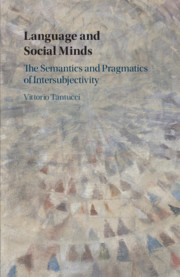2 - Intersubjective Gradience in Use
From Immediate to Extended Construals of Social Cognition
from Part I
Published online by Cambridge University Press: 26 March 2021
Summary
This second chapter defines the fundamental characteristics of intersubjective gradience through interaction, language change and ontogeny. It discusses the gradience dimension of intersubjectivity and the way increasing complexity of intersubjectified constructions and strategies can be operationally analysed and quantified. I illustrate an online and diachronic shift from basic co-actional interaction, to overtly communicated awareness of the mind of the interlocutor (immediate intersubjectivity, I-I) who is present during the here and now of the speech event, to more complex assumptions about common sense and inferred social behaviour (extended intersubjectivity, E-I). This shift in complexity of linguistic utterances matches the evolutionary-developmental model proposed in Tomasello (2019) whereby human evolution is, in turn, hypothesised to have been progressively acquiring abilities of dyadic intentionality, then shifting to triadic attention (i.e. including a common object of joint attention), to finally developing the more complex ability to infer and understand the collective intentions, conventions and set of beliefs of a social group.
Keywords
- Type
- Chapter
- Information
- Language and Social MindsThe Semantics and Pragmatics of Intersubjectivity, pp. 22 - 46Publisher: Cambridge University PressPrint publication year: 2021



